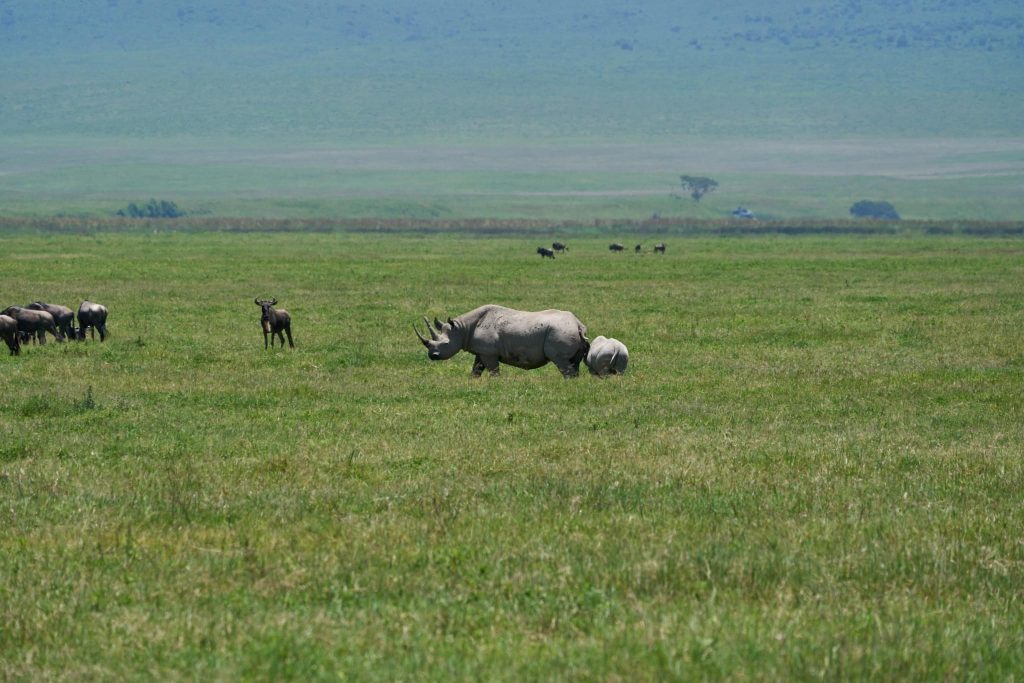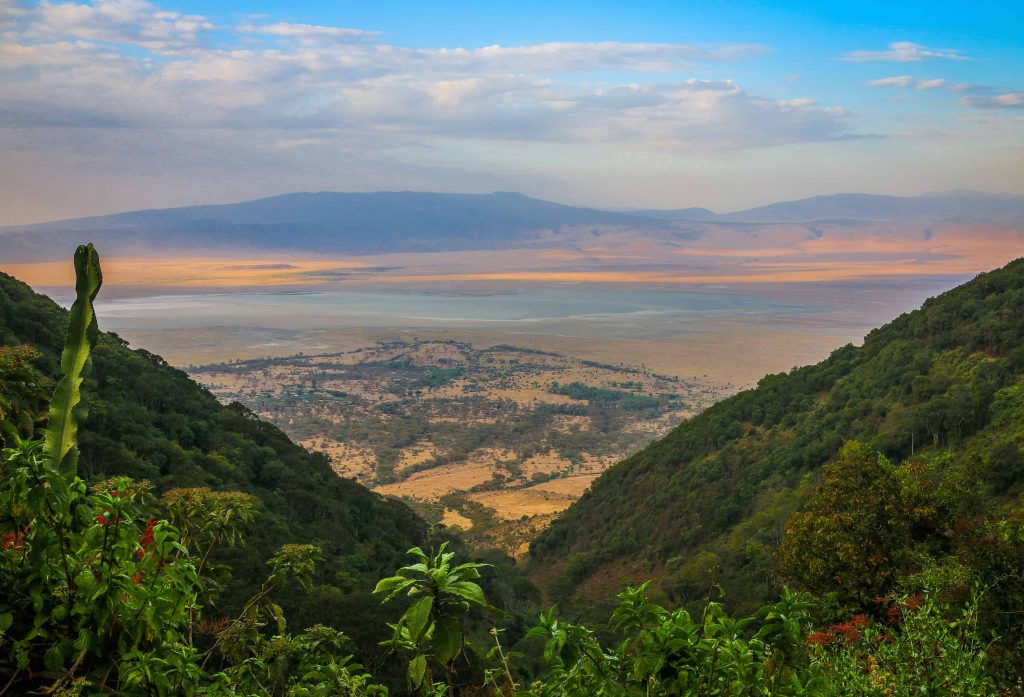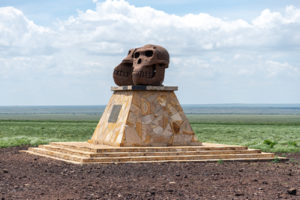The Ngorongoro Crater and Conservation Area is a UNESCO World Heritage Site found in the Republic of Tanzania. It was established in 1959 covering vast expanses of craters, gorges, forests, lakes, rivers, streams, savanna grasslands and woodlands. The stunning combination of landscape and wildlife rivals those in neighboring Serengeti. The Ngorongoro Conservation Area is made up of the famous Ngorongoro crater, Olduvai Gorge and the remote crater highlands.
The Ngorongoro Crater is often referred to as ‘the Garden of Eden’ because it is a true paradise for animals. The crater is important for global biodiversity because it contains threatened species and high concentration of animals. It is the largest unfilled volcanic caldera in the world. The crater was formed about 3 million years ago when a large volcano (about 19,000 feet) exploded and collapsed on itself. The massive explosion left behind a floor covering an area of 303 square kilometers and 6,10 meters deep. The crater consists of water bodies like Lake Magadi and the Ngoitokitok Spring. The water bodies provide water for wildlife throughout the year but the Maasai herdsmen also use them to supply water for their animals – especially during the dry months of the year.
History of the Ngorongoro Conservation Area

If we are to consider the age of fossils excavated from the Olduvai Gorge, the first humans occupied the area three million years ago. After these first hominids, pastoralists like the Mbulu and Datooga ruled the area for over 2,000 years. The Maasai appeared in the area in the 1800’s from Sudan. When they did, they drove out the Datoog and Mbulu to remote areas of the reserve. The first European to reach the area was Oscar Baumann in 1892. When the Serengeti National Park was created in 1951, the Ngorongoro Conservation Area was part of it until it became independent in 1959. Initially the Maasai pastoralists were allowed to roam freely in the area after being relocated from the Serengeti National Park but the 2009 Ngorongoro Wildlife Conservation Act displaced them further. They were allowed to stay in the area but with greater restrictions by the Ngorongoro Conservation Area Authority. The Ngorongoro Conservation Area Authority is responsible for the overall management of the area.
The Ngorongoro Crater and Olduvai Gorge
Ngorongoro Crater

The Ngorongoro crater is one of the best places to view wildlife in Africa. It is estimated that over 30,000 large mammals live in the Ngorongoro Crater. They include waterbucks, African leopards, black rhinos, buffaloes, cheetahs, crocodiles, East African wild dogs, elands, grant’s gazelle, zebra, hippopotamus, impala, lions, oribi, Thomson’s gazelles, topi and wildebeest. Most of these animals remain in the natural enclosure without migrating except for a few wildebeest and elephants. This has led to significant inbreeding in some species like lions.
Wildlife is not only prevalent in the Ngorongoro Crater. As one moves out of the crater and into the wider Ngorongoro Conservation Area there are healthy populations of wildlife too. Around the Ndutu Lake is a strong lion and cheetah population. Other animals around the lake are jackals, spotted hyena, wild dogs and servals to mention a few. The Ngorongoro Conservation Area is host to the famous great migration in East Africa. In December, about 1.5 million wildebeest, 500,000 zebras and 300,000 gazelle move through the area from the South. In June the same number moves back to the North.
Olduvai Gorge

The Olduvai Gorge is found in-between the Serengeti plains and the Ngorongoro Crater. Archaeologists consider it to be the seat of humanity because remains of the very earliest known humans were first discovered there. Olduvai Gorge is visited by thousands of tourists who are interested in learning about the work of the Leakey family and understanding how the earliest humans evolved. There is a small museum at the sight where fossils dating back to about 3 million years ago are kept.
Tourism within the Ngorongoro Conservation Area
The Ngorongoro conservation area is one of the best places to view wildlife in Africa. It is also one of the most visited tourist attractions in Tanzania. The main activities in the Ngorongoro Conservation Area are walking short and long safaris to observe wildlife from the rim of the crater (can take about 6 hours), camping along the rim of the crater, visiting the local Maasai villages and a game drive around and in the crater itself.
Lake Magadi is a shallow alkaline-filled lake and a favorite habitat for both lesser and greater flamingos. Flamingos and other birds love the lake because of its remoteness, salty waters and abundant algae. Other animals like hyenas and jackals visit the lake to supplement their diet by licking salt. The Lerai Fever Tree Forest consists of a rare type of yellowish and slim acacia trees. These trees are a favorite of rhinos, bushbucks, elephants, eland, hyrax and birds. The Shifting sands are a result of ash coming out from Ol Dionyo mountain. This ash moves slowly over the vast plains providing a great spectacle for tourists to happen to visiting the area. Apart from the Ngorongoro crater, the area has other large craters like the Olmoti and Empakaai. These two craters are excellent for nature walks to encounter wildlife and the Maasai herdsmen looking after their domestic animals. The remote and pristine Gol Mountains are also a key attraction within the Ngorongoro Conservation area. It lies along a major route used by thousands of zebras and wildebeest as they migrate to and from the Serengeti plains.
